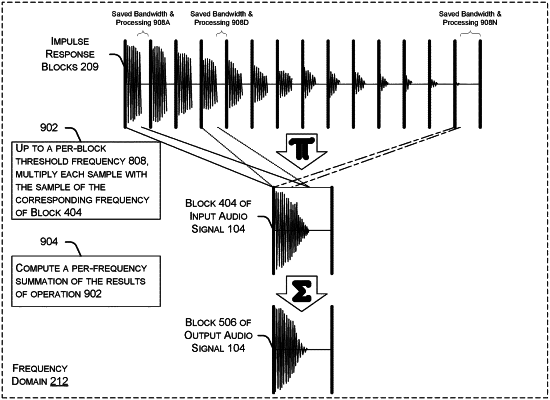| CPC G10L 21/0332 (2013.01) [G10L 19/022 (2013.01); G10L 21/007 (2013.01); H04S 7/301 (2013.01)] | 20 Claims |

|
1. A computer-implemented method for efficient real-time audio processing, the method comprising:
receiving an audio signal block comprising a first plurality of frequency samples ordered from a lowest frequency to a highest frequency;
identifying an impulse response block to convolve with the audio signal block to generate an output audio signal, wherein the impulse response block comprises a second plurality of frequency samples ordered from the lowest frequency to the highest frequency;
identifying a first threshold frequency above which frequency samples of the first plurality of frequency samples would contribute less than a threshold amount of volume to the output audio signal;
identifying a second threshold frequency above which frequency samples of the second plurality of frequency samples would contribute less than the threshold amount of volume to the output audio signal;
copying, to an audio processing device, frequency samples of the second plurality of frequency samples that are less than the second threshold frequency;
identifying as a maximum frequency a minimum of the first threshold frequency and the second threshold frequency;
performing a convolution, from the lowest frequency to the maximum threshold frequency, on frequency samples from the first plurality of frequency samples with frequency samples from the second plurality of frequency samples; and
generating the output audio signal based on a result of the convolution.
|